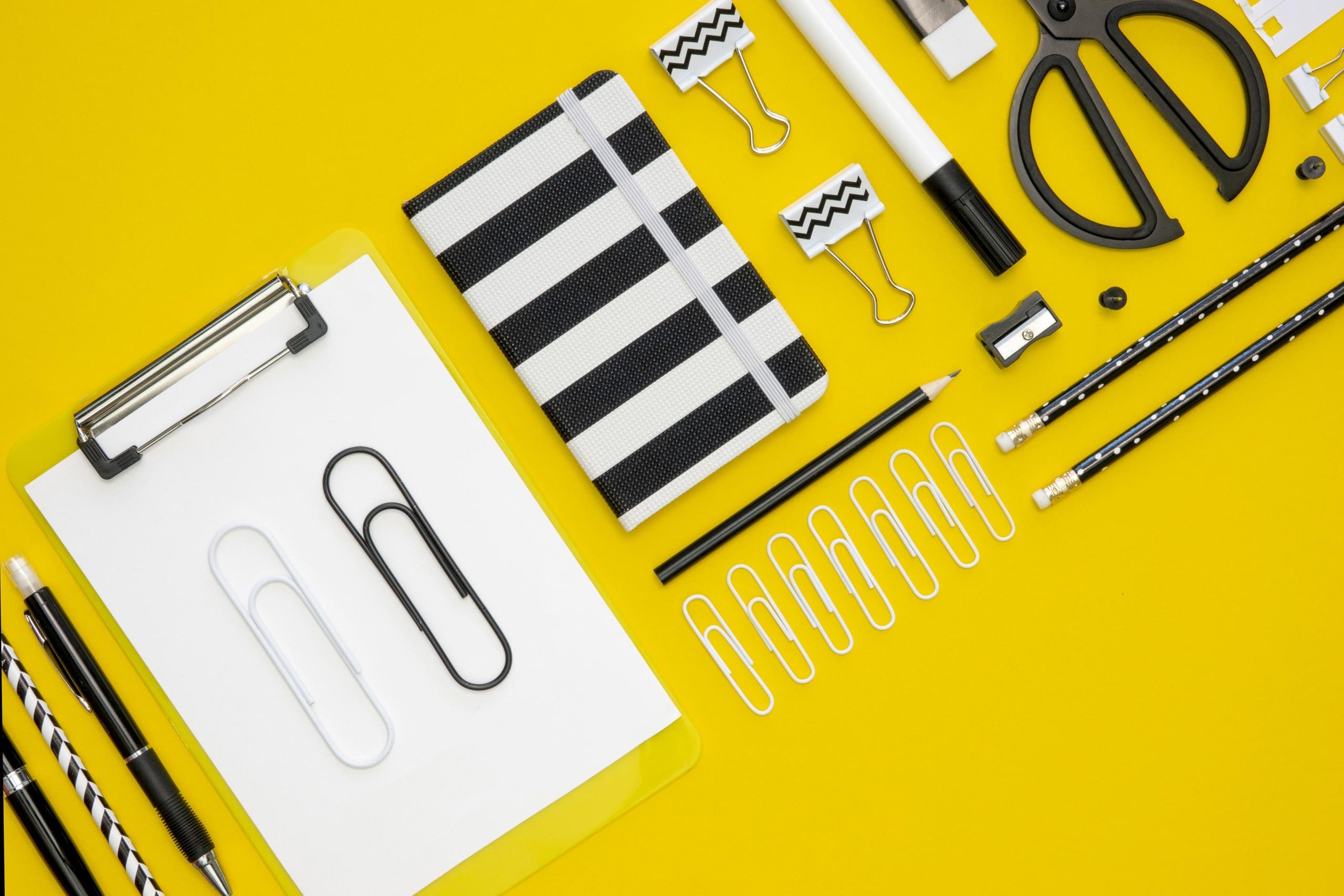Introduction
In today's digital age, the impact of web design on marketing cannot be overstated. According to a study, 75% of users admit to making judgments about a company’s credibility based on its website design. This statistic underscores a crucial reality: a well-designed website serves not just as a digital storefront but as a critical element in building trust and engagement with potential customers.
As we delve deeper into the relationship between web design and marketing, it becomes clear that these two components are not merely complementary; they are interdependent. Effective web design enhances marketing strategies by creating a user-friendly experience that captivates visitors and encourages conversions. In this blog post, we will explore how strategic design choices can elevate marketing efforts, ultimately driving business success and fostering lasting relationships with customers.
The importance of web design in marketing
First impressions matter
In the digital age, a website often serves as the first point of contact between a business and its potential customers. Studies show that users form an opinion about a website within milliseconds, making it crucial for companies to make a strong initial impression.
For instance, imagine a user searching for a local coffee shop. They come across two websites: one is visually appealing, with vibrant images, a clean layout, and engaging content, while the other is cluttered, outdated, and hard to navigate. The user is likely to trust the first site, perceiving it as more credible and professional. This immediate judgment underscores the critical role that good design plays in enhancing a brand’s credibility.
Well-designed websites utilize consistent branding elements, such as logos, colors, and typography, to foster trust and recognition. Take Apple, for example; its sleek, minimalist design not only showcases its products but also reflects its brand ethos of innovation and quality. Such design choices convey professionalism and invite users to explore further, establishing a lasting positive impression.
User experience (UX) and engagement
User experience (UX) is a critical factor in retaining visitors on a website. A seamless and enjoyable UX encourages users to engage more deeply with content, ultimately leading to higher conversion rates. If a website is difficult to navigate or slow to load, users are likely to abandon it in search of a better alternative.
Key features that improve UX include:
Navigation
Intuitive navigation is essential for guiding users through the site effortlessly. Clear menus and organized categories help visitors find what they need without frustration. For example, Amazon's robust filtering options allow users to narrow down product searches effectively, making their shopping experience efficient and enjoyable.
Loading speed
Fast loading times are crucial; research indicates that a mere two-second delay in web page load time increases bounce rates by 103 percent. Users expect quick access to information, and a slow site can severely damage their experience. Tools like Google’s PageSpeed Insights can provide valuable insights into performance and suggest improvements.
By prioritizing these aspects of UX, businesses can create a website that not only attracts visitors but also keeps them engaged, enhancing the likelihood of conversion. A well-designed site serves as a powerful marketing tool, converting casual visitors into loyal customers by delivering a pleasant and efficient browsing experience.
Key elements of effective web design
A visual appeal
Visual appeal is a cornerstone of effective web design. It encompasses various elements, such as color schemes, typography, and imagery, all of which contribute to how users perceive a brand and its offerings.
Color schemes
Colors evoke emotions and influence user behavior. For instance, blue often conveys trust and reliability, making it popular among financial institutions like PayPal. In contrast, vibrant colors like red can create urgency, making them ideal for sales promotions. Consistency in color usage across the website reinforces brand identity and enhances recognition.
Typography
The choice of fonts affects readability and overall aesthetics. Brands like Google utilize clean, sans-serif fonts to maintain a modern and approachable look. Effective typography not only improves the user experience but also helps convey the brand's personality, whether it’s playful, elegant, or professional.
Imagery
High-quality images play a crucial role in capturing attention and conveying messages. Brands such as Airbnb use striking visuals to evoke emotions related to travel and adventure, making their offerings more enticing. Imagery should be relevant and support the website's narrative, creating a cohesive experience for users.
Mobile responsiveness
With the rise of mobile usage—over 50% of web traffic now comes from mobile devices—ensuring that websites are mobile-responsive is more important than ever. A responsive design adapts to various screen sizes, providing an optimal viewing experience whether on a smartphone, tablet, or desktop.
Benefits of responsive design
1. User engagement
Mobile-responsive websites improve user engagement by providing a seamless experience across devices. Users are more likely to stay on a site that is easy to navigate and read on their mobile devices.
2. SEO advantages
Search engines like Google prioritize mobile-friendly sites in their rankings. A responsive design reduces bounce rates and enhances dwell time, both of which are critical factors for SEO. By optimizing for mobile, businesses can reach a broader audience and improve their visibility in search results.
Clear calls to actions (CTAs)
Calls to action (CTAs) are critical components of web design, guiding users toward desired actions, such as signing up for a newsletter, making a purchase, or downloading a resource. An effective CTA stands out and compels users to act.
Definition and importance
CTAs are prompts that encourage user interaction and drive conversions. Without clear CTAs, users may leave the site without taking any action, resulting in missed opportunities.
Examples and placement strategies
Effective CTAs
Phrases like "Get started," "Sign up for free," or "Shop now" create urgency and encourage clicks. The language should be action-oriented and resonate with the target audience.
Placement
CTAs should be strategically placed where users are most likely to engage with them. Common placements include at the top of the homepage, within blog posts, and at the end of landing pages. Using contrasting colors can help CTAs stand out from the rest of the content, drawing attention to them.
By focusing on visual appeal, mobile responsiveness, and clear CTAs, businesses can create effective web designs that not only attract visitors but also guide them toward meaningful interactions, ultimately driving conversions and strengthening brand loyalty.
Integrating marketing strategies with web design
SEO best practices
The integration of web design and SEO is vital for enhancing online visibility. Design elements significantly influence SEO performance through factors like site structure and page speed.
Impact of design on SEO
Site structure
A well-organized website structure facilitates easier navigation for users and search engines. Utilizing a logical hierarchy with clear categories and subcategories improves the user experience and helps search engines index the content more efficiently. For example, a sitemap can enhance site structure by providing a roadmap for search engines.
Page speed
Fast loading times are crucial for both the user experience and SEO rankings. Research indicates that even a one-second delay can lead to a 7% reduction in conversions. Optimizing images, minimizing code, and leveraging browser caching are effective strategies for improving page speed.
Tips for optimizing web design for search engines
- Mobile optimization: Mobile optimization cannot be stressed enough. Ensure your website is responsive, as search engines prioritize mobile-friendly sites.
- Image optimization: Use descriptive file names and alt text for images, improving accessibility and SEO.
- Clean code: Minimize HTML and CSS bloat to improve loading times and enhance search engine crawlability.
Content marketing alignment
Design plays a crucial role in how content is presented, impacting user engagement and retention. High-quality content can only shine when paired with effective design.
Importance of design in presenting content
- Blogs and Articles: An engaging layout can significantly enhance the readability of blog posts. Using headings, bullet points, and whitespace can help break up text and make it more digestible. A well-structured article with visually appealing elements keeps readers engaged for longer.
- Videos: Video content should be integrated seamlessly into the website. Ensure that videos are easy to find and view, with clear thumbnails and titles. Incorporating video can boost user engagement and increase the time spent on the site, which is beneficial for SEO.
Strategies for integrating visuals and text
- Infographics: Combine text and visuals to summarize complex information in an easily digestible format. Infographics can enhance understanding and shareability.
- Consistent branding: Use consistent branding elements (colors, fonts, and logos) across all content to reinforce brand identity and create a cohesive experience.
Social media integration
Effective web design can significantly enhance social media sharing, drive traffic, and increase brand exposure.
Enhancing social sharing
- Prominent social media buttons: Placing social media buttons in strategic locations—such as at the top of blog posts, near CTAs, or in the footer—encourages users to share content easily. Using recognizable icons with clear labels can further enhance usability.
- Social media feeds: Integrating social media feeds directly onto the website can keep content fresh and engage users. It showcases real-time updates and encourages visitors to follow the brand on social platforms. For example, displaying an Instagram feed can highlight user-generated content and promote community engagement.
Examples of effective social media integration
- Share buttons: Websites like BuzzFeed prominently feature social sharing buttons on their articles, making it easy for users to share content across platforms like Facebook and Twitter.
- Follow buttons: Brands like Nike often place social media follow buttons in their site headers, allowing users to connect with them instantly, increasing their follower base.
By integrating these marketing strategies with web design, businesses can create a cohesive online presence that attracts and retains visitors while enhancing their marketing efforts. This synergy not only improves the user experience but also drives engagement, conversions, and brand loyalty.
Successful brands
In this chapter, we will look at successful brands and how they use web design for marketing purposes. We'll start with Airbnb, then Nike and Shopify, and finally we'll look at the good practices of our own company, the unique CREA SPACE.
Airbnb
Web design
Airbnb’s website features stunning visuals and an intuitive layout that highlights user-generated content, making it easy for visitors to browse listings. The search functionality is prominent, allowing users to find accommodations quickly.
Marketing strategy
Their marketing leverages user stories and experiences, fostering a community feel. This approach not only enhances brand loyalty but also encourages social sharing.
Key takeaways
Airbnb harnesses the power of visual storytelling to engage and captivate its audience. By using high-quality imagery, they effectively convey the emotions and unique experiences that each listing offers, creating a deeper connection with travelers. Coupled with a user-centric design that focuses on understanding and addressing user needs and preferences, the overall experience on Airbnb is significantly enhanced. This approach not only captivates but also resonates with users.
Nike
Web design
Nike’s website combines bold visuals with a clean interface. It effectively showcases products through engaging videos and images while maintaining easy navigation.
Marketing strategy
Nike employs powerful storytelling in its campaigns, using social proof and influencer marketing to connect with consumers.
Key takeaways
Nike excels at maintaining a strong brand identity by ensuring consistent branding across all platforms. This reinforces its identity and makes the brand easily recognizable to consumers worldwide. Additionally, Nike engages its audience through dynamic multimedia content, captivating users and keeping them engaged with compelling stories and visuals. This strategic combination of strong branding and engaging content fosters a deep connection with customers, driving loyalty and enthusiasm for the brand.
Shopify
Web design
Shopify’s website is designed for clarity, with clear CTAs and easy navigation, guiding users to explore their e-commerce solutions.
Marketing strategy
They leverage content marketing by providing valuable resources like blogs and tutorials that educate potential customers about e-commerce.
Key takeaways
Shopify excels in supporting its users by offering educational content that helps them make informed decisions about their businesses. By providing valuable resources, Shopify empowers entrepreneurs to succeed. Additionally, Shopify employs clear calls to action (CTAs) that effectively guide users through the conversion process, ensuring a seamless and efficient experience. This strategic focus on education and clear guidance enhances user confidence and drives business growth.
CREA SPACE
Web design
At CREA SPACE, we prioritize clear and easy navigation to ensure users can effortlessly find what they need. Our web design features clear-cut and consistent branding, creating a cohesive and professional online presence that strengthens our brand identity and user trust.
Marketing strategy
Our marketing strategy leverages social proof to build credibility and trust with our audience. We regularly share blog posts on LinkedIn to engage with our professional network and showcase our expertise. Additionally, we create comprehensive case studies and eBooks to provide in-depth insights and valuable resources to our audience.
Key takeaways
Key takeaways from CREA SPACE's approach include the importance of clear and easy navigation in web design, along with clear-cut and consistent branding to enhance the user experience and reinforce brand identity. In our marketing strategy, leveraging social proof, sharing blog posts on LinkedIn, and providing comprehensive case studies and eBooks effectively build credibility and engage our audience.
Common pittfalls to avoid
Neglecting mobile users
Many businesses fail to prioritize mobile responsiveness. With the majority of web traffic coming from mobile devices, neglecting this aspect can lead to significant user loss and poor SEO performance.
Overcomplicating design
A cluttered design can confuse users and detract from the main message. Keeping layouts simple, with a clear focus on content and usability, is essential for maintaining engagement.
Ignoring SEO
Some brands overlook the importance of integrating SEO best practices into their design. Without considering how design elements impact SEO, they may miss opportunities for better visibility and traffic.
Inconsistent branding
Failing to maintain consistent branding across all platforms can confuse users and weaken brand recognition. It’s crucial to ensure that color schemes, typography, and messaging align across the website and marketing materials.
Lack of clear CTAs
Without clear and compelling CTAs, users may not know what action to take next. Ensuring that CTAs are strategically placed and visually distinct is essential for guiding user behavior.
By studying successful brands and learning from common pitfalls, you can enhance your web design and marketing integration, ultimately leading to improved user experiences and higher conversion rates. These insights serve as valuable lessons for anyone looking to strengthen their online presence.
Additional resources
When it comes to web design and marketing, utilizing the right tools can significantly enhance productivity and creativity. Here are some essential tools to consider:
- Adobe XD: A powerful design and prototyping tool that allows designers to create wireframes and interactive prototypes. It offers collaborative features, making it easier for teams to work together in real time.
- Figma: A cloud-based design tool that enables collaboration on design projects. Figma’s real-time editing capabilities allow multiple users to work simultaneously, streamlining the design process and making feedback easier to implement.
- Sketch: Widely used by designers for creating user interfaces and prototypes, Sketch offers a robust set of features tailored for web design. Its plugin ecosystem enhances functionality, making it a favorite among many professionals.
- Canva: An accessible graphic design tool perfect for marketers and non-designers. Canva provides templates for social media graphics, presentations, and more, allowing users to create visually appealing content quickly.
- Google Analytics: Essential for tracking website performance and user behavior. By analyzing metrics such as traffic sources and user engagement, businesses can make informed decisions to improve their web design and marketing strategies.
- WordPress: A flexible content management system (CMS) that powers millions of websites. Its wide array of themes and plugins allows users to create customized, professional-looking sites without extensive coding knowledge.
Conclusion
In today's digital landscape, the relationship between web design and marketing is more crucial than ever. Effective web design serves as the foundation for successful marketing strategies, influencing how users perceive and interact with a brand. Key elements such as visual appeal, mobile responsiveness, and clear calls to action play significant roles in attracting and retaining customers.
Moreover, integrating SEO best practices into web design not only enhances visibility but also improves user experience. Aligning content marketing with design ensures that valuable information is presented in an engaging manner, fostering deeper connections with the audience. Finally, social media integration amplifies a brand's reach, making it easier for users to share content and engage with the brand across multiple platforms.
Together, these elements create a holistic approach to online presence, emphasizing that thoughtful web design is an essential component of effective marketing.
Further reading
To stay updated on the latest trends in web design and marketing strategies, consider exploring the following resources:
- "The 29 Dominating Web Design Trends for 2024" - HubSpot: This comprehensive guide covers everything from kinetic typography to ultra-minimalism, providing valuable insights for businesses looking to enhance their online presence.
- "Inspiring Web Design and UX Showcases" - Smashing Magazine: A detailed exploration of the finest web designs, this article offers inspiration if you feel like all websites look the same.
- "SEO and Website Design: How to Build a Site That Ranks" - WebFX: This article outlines critical SEO strategies to consider during the design process, helping you create a website that is both visually appealing and optimized for search engines.
- "Developing a Content Marketing Strategy" - Content Marketing Institute: This resource offers insights into what a content marketing strategy really is. If you find yourself asking questions like “Do I really need to create a content strategy?” or “What should my content marketing strategy include?” then this is the go-to source for you.
- "12 Winning Social Media Integration Strategies for 2024" - Hootsuite: An insightful look at how to effectively integrate social media into your website (design) to maximize engagement and reach.


